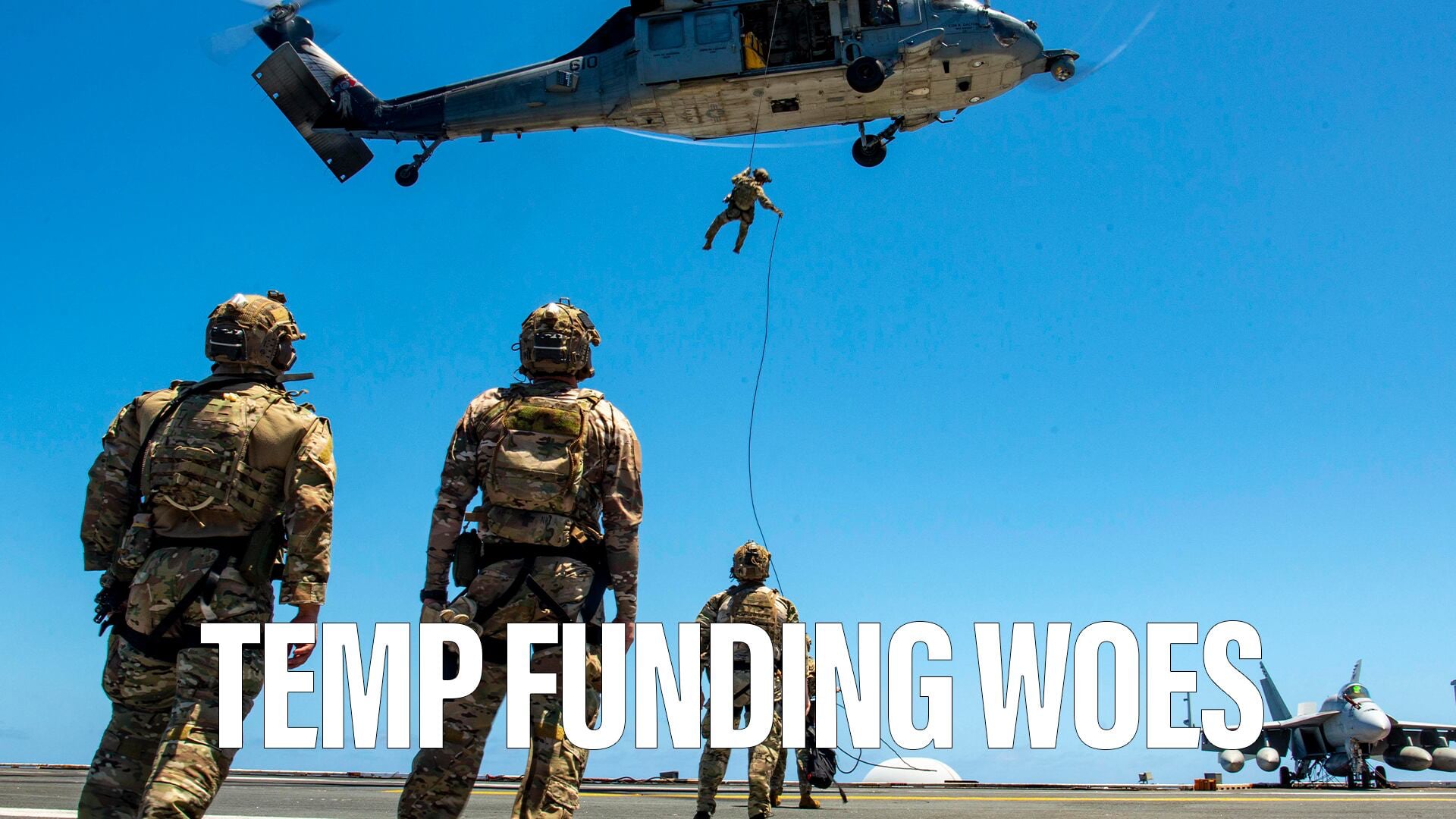The military’s massive experimentation event, Project Convergence, will plant a flag in the strategically vital Pacific region next year, the first time that U.S. and allied forces will kick the tires of the Pentagon’s latest warfighting concepts at the edge of America’s sphere of influence.
“Our large experiments need to be concept-informed, and the concepts we’re talking about are the sets of capabilities and relationships that we think we’re going to need to win in the operating environments we are going to face in the future,” said Army Brig. Gen. Zachary Miller, who heads the Joint Modernization Command at Fort Bliss, Texas. “And the priority theater for the Department of Defense is the Pacific.”
The joint force has simulated Pacific scenarios in the United States during previous iterations of the exercise, which began as an Army-only event in 2020 at Yuma Proving Ground, Arizona. But the experimentation campaign has never been held forward in relevant theaters aside from some peripheral activities at the Army Pacific headquarters level earlier this year, Miller said.
Project Pacific
The vast majority of the experimentation at Project Convergence is now slated to take place in Hawaii and Guam, then all the way out along the first island chain from Japan to the Philippines, and down under in Australia over the month of April.
“We are 100% taking what you saw in a bunch of tents next to each other at Camp Pendleton last year and putting it in the Pacific across both sides of the international date line in the headquarters of all the actual operational units,” Miller said.
Japan’s Ground Self Defense Force will be a full participant as well as Australia and the rest of the Five Eyes partners — Canada, New Zealand and the United Kingdom. The Philippines will be considered an observer for this round.
The Army’s 3rd Multidomain Task Force will be in Australia for the event, and the 1st MDTF will be in the Philippines. This summer, Australian officers embedded with the 3rd MDTF, and the 1st MDTF has already participated in exercises in the Philippines, including Balikatan in May.
The campaign is expected to more closely align the Army and the other services with the Air Force’s Agile Combat Employment concept and to work closely with the air service’s Battle Network, Miller said. “We want to bridge air and space with the land and the sea.”
The Air Force’s Agile Combat Employment doctrine prescribes that formations of planes and drones must be prepared to take off and land from dispersed, less-than-ideal runways during a future conflict, especially one involving China. The efforts grew from the expectation that enemies will first target large U.S. air bases hosting concentrated air power if war breaks out, thereby decimating the strategic advantage of aerial overmatch.
At the spring event, the U.S. military services and international partners will try to bring their massive array of sensors across all the different domains into one picture. “We’ve made a lot of strides in that, we want to push forward on how we quickly turn that information into action,” Miller noted.

Going back to Cali
While Project Convergence will feature a complex scenario in the Pacific, officials will still conduct another scenario at the National Training Center at Fort Irwin, California. That vignette is focused on the land domain, but with joint and international participation as well. Other U.S. locations include the Nevada Test and Training Range and San Clemente Island off the shores of Camp Pendleton, California.
“We will have live aircraft doing sensing, shooting live fires,” Miller said, and the Army will have every echelon of the 18th Airborne Corps participating.
A fair amount of experimentation will bleed over into what the Army Chief of Staff Gen. Randy George is calling “transforming in contact.” The initiative gives up-and-coming capabilities to brigade-size units at scale to gauge their expected impact in the field.
Portions of the Army’s initiative to fix the current network and command-and-control capabilities to better fit into a next-generation C2 framework will also be under evaluation.
And the Army will build off its first major attempt in early 2024 to examine how humans and robots will fight together on the battlefield — an effort known as human-machine integration, according to Miller. The experimentation event will use the Army’s Next-Generation C2 capabilities — a pilot program based on a new battlefield network and C2 architecture — to coordinate it all.
Guided by Next-Gen C2 features, the human-machine integration event “is going to lead off with a breaching of a complex obstacle, meaning that’s going to have mines, it’s going to have wire, it’s going to have fires on it from the enemy and it will be done completely autonomously,” Miller said. “Normally you think about people having to drive vehicles up to explosively destroy things or cut wire or whatever and that will be done completely with some pretty novel approaches to it.”
The Army will also focus on bringing in launched effects that can be fired from a wide variety of platforms like helicopters, drones, high-altitude balloons or from the ground, according to Miller. “The air will be contested and congested,” he said. “It will be very hard to distinguish whose thing is there in the air, and it’s going to be hard to control that airspace.”
The Army will also increase its experimentation on maneuvering in the electromagnetic spectrum. As the service crafts its next warfighting concepts, Miller said, one of the emerging ideas calls for effective maneuvering in the electromagnetic spectrum just like the Army conducts ground maneuver. “It is a sea change in how we would operate because we can’t see the electromagnetic spectrum, but we have to protect ourselves. We have to attack the enemy in it. We have to identify, we have to deceive the enemy.”
Jen Judson is an award-winning journalist covering land warfare for Defense News. She has also worked for Politico and Inside Defense. She holds a Master of Science degree in journalism from Boston University and a Bachelor of Arts degree from Kenyon College.







